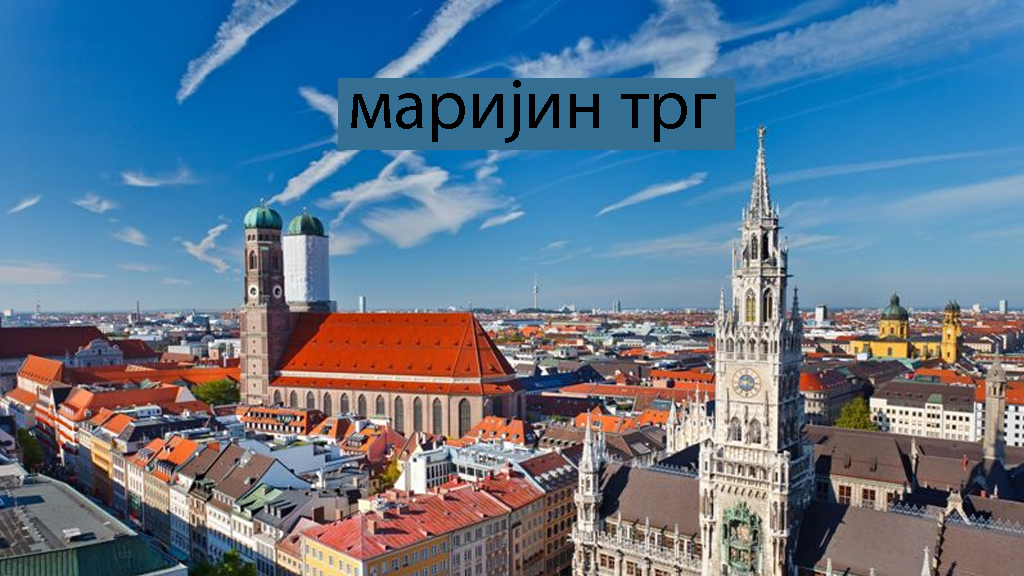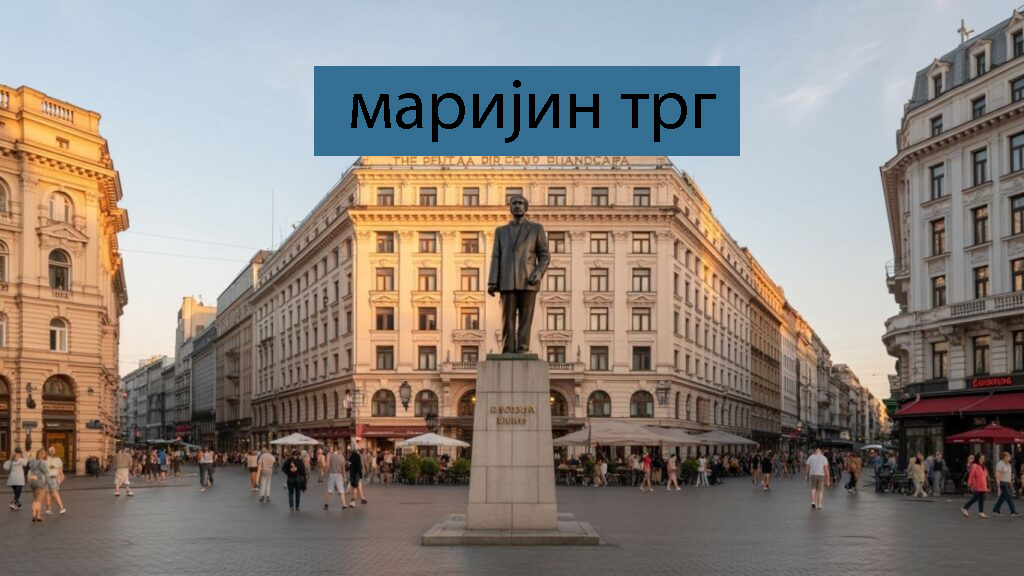Belgrade, the capital of Serbia, is a city that thrives on contrasts—where centuries-old architecture stands beside modern buildings, and where cultural tradition blends with contemporary urban life. Among its most intriguing places is маријин трг (Marijin Trg), a public square that has grown into a cultural, social, and architectural symbol of the city.
This article explores the history, cultural importance, architectural charm, and modern role of маријин трг, offering a comprehensive guide for locals, tourists, and anyone curious about Belgrade’s evolving identity.
Historical Background of маријин трг
The story of маријин трг begins in the early 19th century, a time when Belgrade was transforming from a fortified Ottoman town into a European-style capital. The square emerged as a modest meeting point and marketplace where residents exchanged goods, shared news, and celebrated community life.

There are two main theories about the square’s name:
- Some historians connect it to the Mariinski Palace, a neoclassical royal residence that became a major landmark of the area.
- Others believe it may be linked to Maria Obrenović, wife of Prince Miloš Obrenović, whose family played a significant role in shaping modern Serbia.
Regardless of its naming origin, the square soon became more than a marketplace—it developed into a center of cultural and political life, reflecting Belgrade’s journey into modernity.
Architectural Landmarks and Surroundings
One of the defining features of маријин трг is its architectural diversity. Standing at the heart of the square is the Mariinski Palace, often celebrated as one of Belgrade’s finest examples of neoclassical architecture. With elegant columns, wide facades, and intricate stone detailing, the palace embodies the grandeur of Serbia’s royal heritage.
Surrounding the square, visitors can also find:
- The National Theater – one of the oldest and most respected cultural institutions in Serbia.
- Art galleries and museums – enriching the neighborhood with exhibitions of contemporary and classical art.
- Historic residential buildings – showcasing 19th-century charm while adapting to modern lifestyles with cafés, shops, and small hotels.
This blend of old-world elegance and modern functionality creates a unique visual harmony, making маријин трг a delightful place to explore.
Cultural and Social Significance
маријин трг is not simply a physical space—it is a cultural heartbeat of Belgrade. For over a century, it has hosted public events, political gatherings, and celebrations that brought citizens together.
Today, its role remains just as vibrant:
- In summer, the square comes alive with open-air concerts, featuring both local and international performers.
- Street artists and performers bring music, theater, and visual art directly to passersby.
- Seasonal farmers’ markets and craft fairs connect modern visitors with traditional Serbian flavors and craftsmanship.
This dynamic cultural atmosphere makes маријин трг a favorite meeting spot not just for locals, but also for travelers eager to experience Belgrade’s authentic soul.
Role in Belgrade’s Modern Urban Development
In recent decades, маријин трг has become closely tied to Belgrade’s modernization projects, most notably the Belgrade Waterfront initiative. This ambitious urban renewal project is transforming the riverfront into a thriving hub of tourism, business, and leisure.
As part of this development, the square has seen:
- Pedestrian-friendly upgrades, making it more accessible and welcoming.
- Smart infrastructure, including modern lighting, eco-friendly benches, and digital kiosks.
- Green areas and landscaping that balance the city’s urban feel with natural beauty.
By combining modern improvements with preservation of historical elements, маријин трг is ensuring its relevance for future generations.
The Modern Charm of маријин трг
What makes маријин трг so appealing today is its ability to blend tradition with modern life.
On one side, visitors are drawn to its historic architecture and cultural landmarks. On the other, they encounter lively cafés, art installations, and modern designs that showcase Belgrade’s contemporary energy.
This dual character makes the square a symbol of Belgrade itself—a place where history meets innovation, and where every visitor can find something meaningful to enjoy.
Future Vision and Sustainability
City planners envision маријин трг as a model of sustainable urban design. Future upgrades are expected to include:
- Fully accessible pathways for people of all abilities.
- Eco-friendly solutions, such as solar-powered lighting and water-efficient fountains.
- Digital innovation, with interactive information screens and creative artistic displays.
These plans highlight Belgrade’s commitment to making the square not only beautiful and functional, but also environmentally responsible and inclusive.

Visiting маријин трг: What to Expect
If you’re planning to visit Belgrade, here’s what awaits you at маријин трг:
- A captivating mix of history and modern architecture.
- The chance to attend cultural events, concerts, and open-air markets.
- A vibrant social atmosphere, especially in the evenings.
- Easy access to nearby attractions such as the National Theater, museums, and shopping districts.
Whether you enjoy a quiet morning coffee or join the lively evening crowd, the square offers an authentic slice of Belgrade life.
READ MORE: KZ43X9NNJM65 Explained: The Digital Code Mystery Everyone Is Talking About
Conclusion
маријин трг is far more than just a public square—it is a living symbol of Belgrade’s identity. From its beginnings as a modest 19th-century marketplace to its current role as a vibrant cultural hub, the square tells the story of a city that values both tradition and progress.
For locals, it remains a beloved gathering place. For visitors, it is a gateway to experiencing the spirit of Belgrade. With its rich history, architectural elegance, cultural vitality, and modern charm, маријин трг is a must-see destination for anyone exploring Serbia’s capital.
Frequently Asked Questions (FAQs)
1. Where is маријин трг located?
It is in central Belgrade, within the Savski Venac district, near major cultural and transport hubs.
2. Why is the square called маријин трг?
It is believed to be named after either the Mariinski Palace or Maria Obrenović, connecting it to Serbia’s royal heritage.
3. What is the historical importance of маријин трг?
It began as a 19th-century marketplace and evolved into a cultural and political gathering space.
4. What landmarks are near the square?
Nearby attractions include the Mariinski Palace, the National Theater, and several art galleries and museums.
5. What cultural events are held at маријин трг?
The square hosts open-air concerts, festivals, markets, art exhibitions, and street performances throughout the year.
6. Is маријин трг pedestrian-friendly?
Yes, modern upgrades have made it highly accessible, with walkways, seating areas, and eco-friendly infrastructure.
7. Is it part of Belgrade’s modernization projects?
Yes, it is closely connected with the Belgrade Waterfront initiative and other urban renewal efforts.
8. Are there cafés and restaurants nearby?
Absolutely—the square is surrounded by cafés, restaurants, and shops offering both local and international cuisine.
9. What makes маријин трг unique compared to other squares?
Its ability to combine history, cultural richness, and modern urban design sets it apart from other public spaces.
10. Is it worth visiting маријин трг at night?
Yes, the square becomes especially lively at night with lights, gatherings, and cultural events.
Click for more amazing info. News Cora

